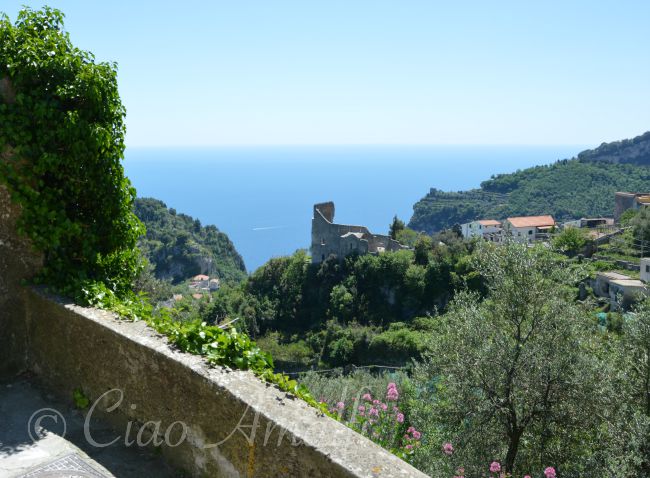
Along the stone steps between the sleepy villages of Minuta and Pontone in Scala, you’ll find something a little unexpected. Set in a commanding position on a promontory surrounded by terraces of olive and lemon trees sits the ruins of what was once one of the finest churches in the Republic of Amalfi in the Middles Ages. Following the zigzaging steps down, the remaining walls of Sant’ Eustachio keep coming into view, closer and closer, as you approach Pontone. Thanks to a locally run association, you can visit the ruins of Sant’Eustachio, which is beautiful stop on the walk from Scala down to Amalfi.
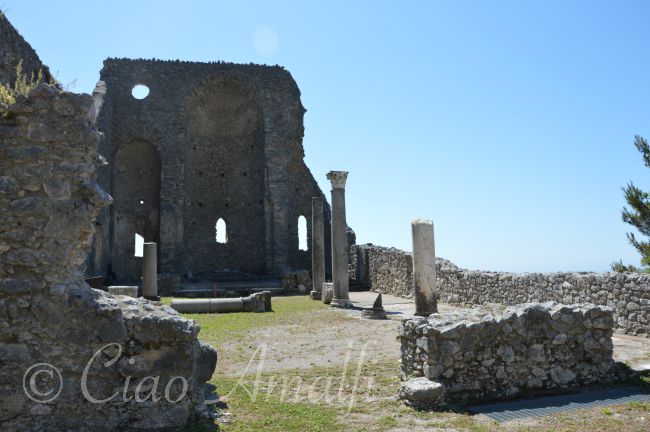
This remarkable church was constructed in the 12th century during the peak of the powerful maritime Republic of Amalfi. While Pontone is a frazione, or hamlet, of Scala today, in the Middle Ages all of Scala was part of the Duchy of Amalfi. Pontone was home to the prominent D’Afflitto family who constructed this church and dedicated it to a saint important to them, Saint Eustace, an early Christian martyr in the 2nd century AD. When you step into what was once the nave of the church, it’s hard to imagine the original splendor of this church.
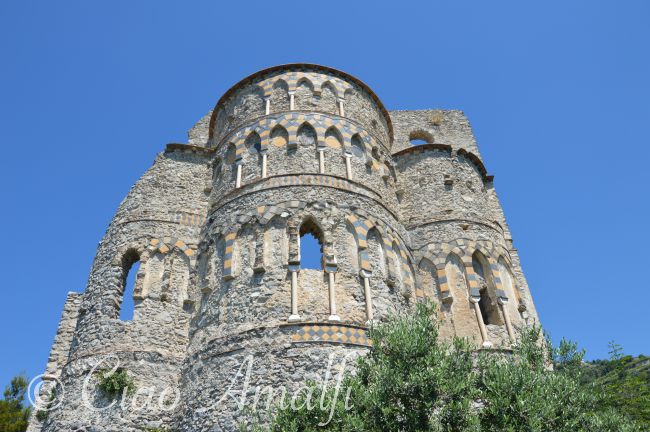
A pathway leads around the walls of the church where you can stand below the curves of the three apses. Here there are signs of the elaborate decoration, which has been restored in areas to reveal the original structural polychromy. Staring up at the traces of design and architectural details, it’s easier to see that at its height Sant’Eustachio must have been an absolute jewel.
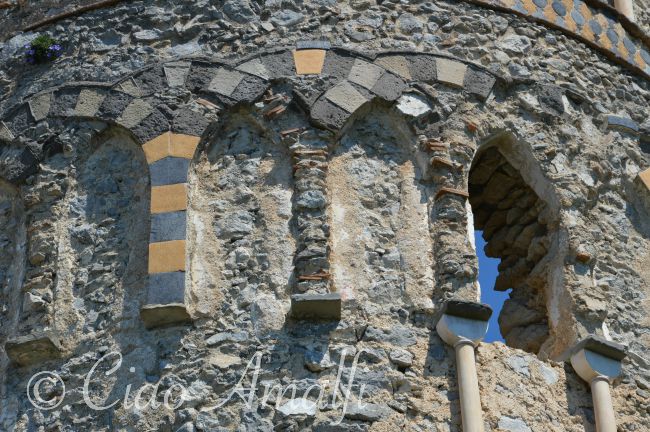
Although in ruins, it is one of the truest examples of the unique architectural style that existed in Amalfi during the Middle Ages – a blend of styles with touches of Sicilian, Arab and Norman influences to name just a few. From this spot high above Amalfi it seems a stretch to imagine traders hundreds and hundreds of years ago crisscrossing the Mediterranean. Yet they did and returned home to build beautiful churches and grand homes high above Amalfi.
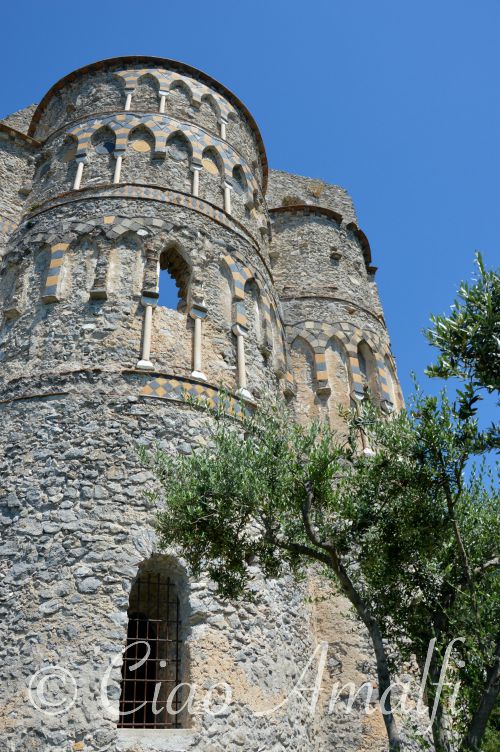
The setting for one of the finest churches on the Amalfi Coast was naturally chosen for its incredible view. The small promontory juts out between the Dragone and Canneto valleys that run down to Amalfi and Atrani. Peeking through the trees you can catch a glimpse of Amalfi down by the sea.
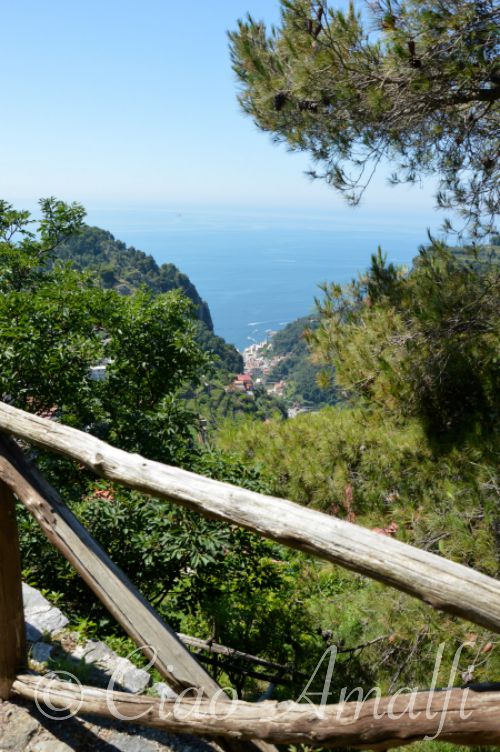
From the tip of the promontory below the ruins the view is breathtaking. Directly below is Pontone, while down the valley to the right is Amalfi and down the valley to the left is Atrani. Look left and you see Ravello sitting high atop its own promontory while to the right is Pogerola, a frazione of Amalfi.
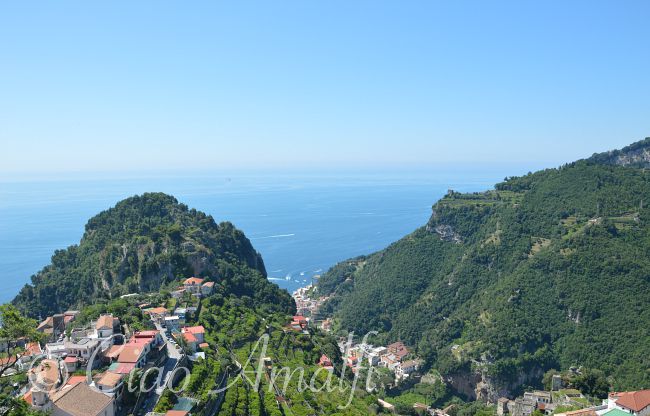
Whether you’re looking at the expansive view or peeking through a window of the ruins to a view across the valley of Ravello, you’ll spend plenty of time just taking it all in.
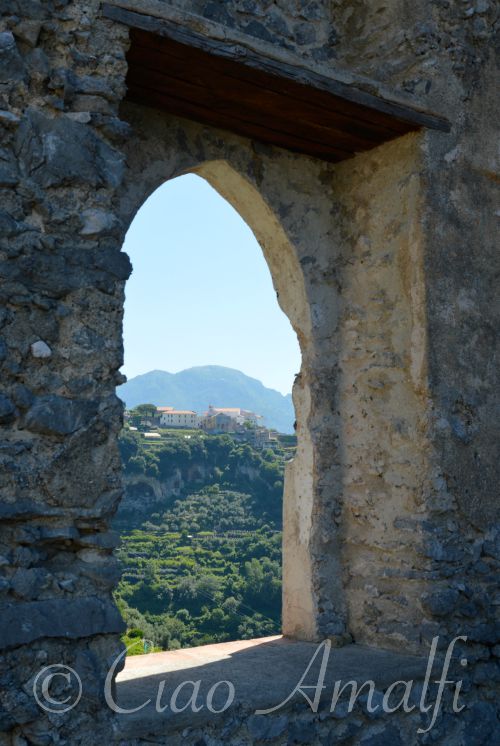
Don’t miss walking down into the crypt, which was one covered with frescoes and was likely one of the most beautifully decorated areas of the church.
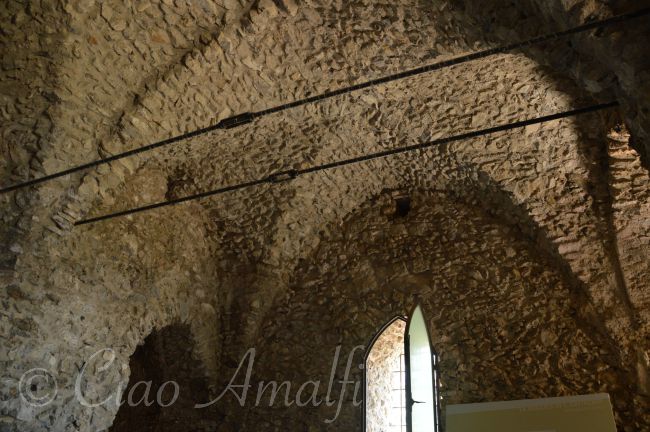
One wall features a painting that is an architectural rendering of what Sant’Eustachio may have looked like originally. It’s helpful for kicking your imagination into full gear before heading back up to the ruins. Just how might the interior have looked originally?
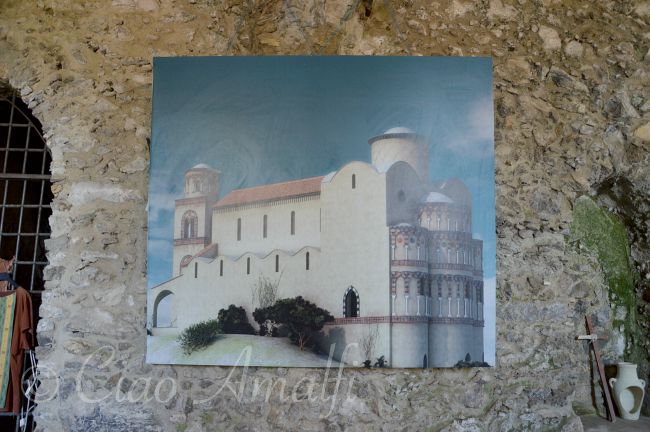
Now there are only a few traces left to help us figure that out. But what remains is incredibly evocative, as is the entire setting.
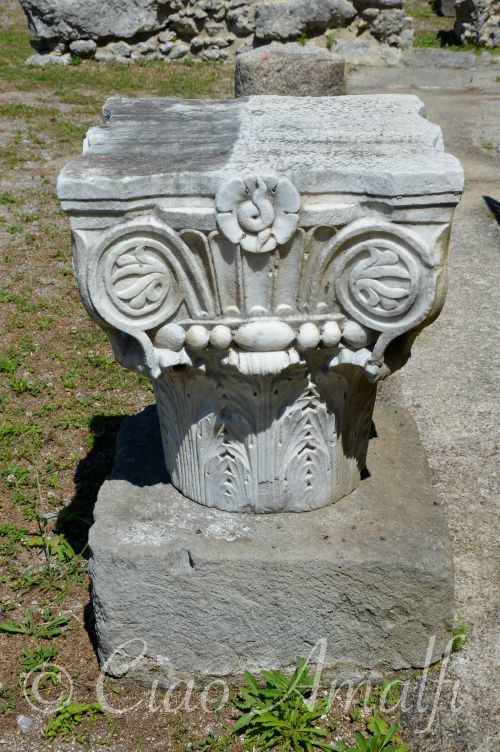
If you’re planning a hike on the Amalfi Coast, one of my favorite is the walk from Scala through Minuta and Pontone down to Amalfi. If you follow that hike, do plan a stop in Pontone to visit the ruins of Sant’Eustachio.
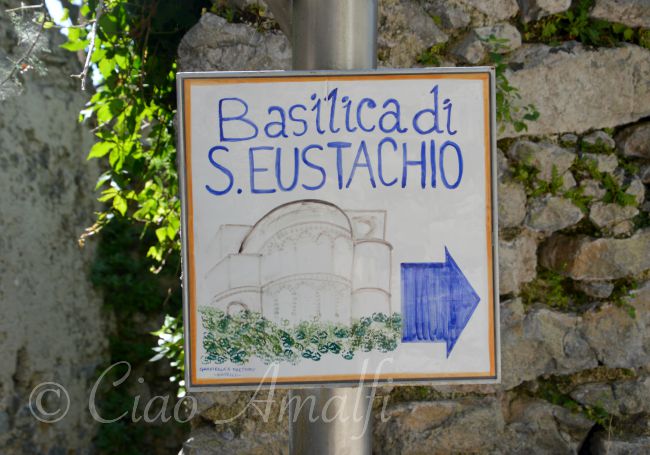
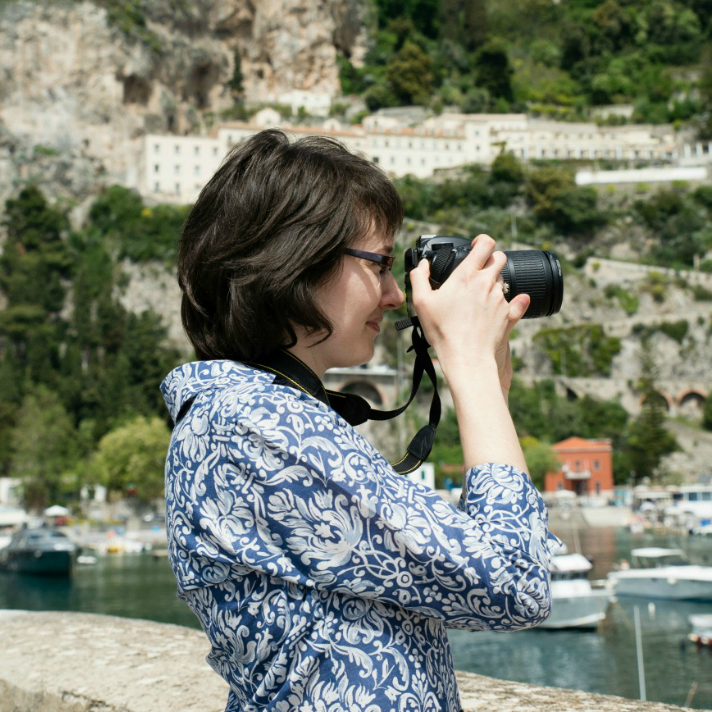
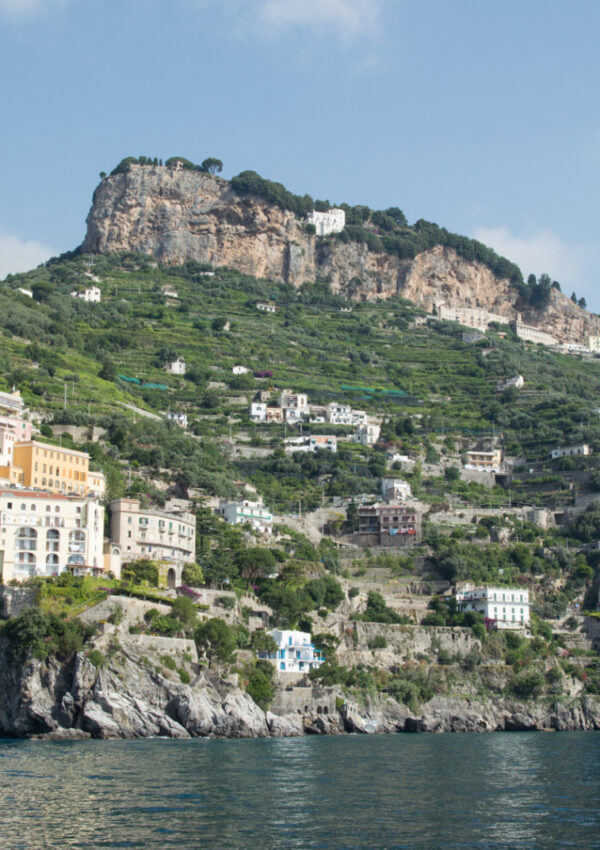
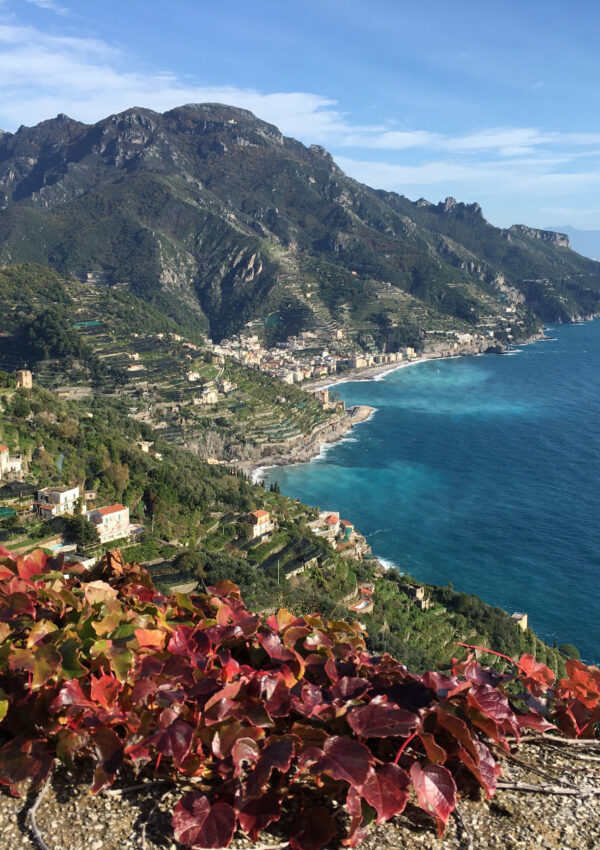
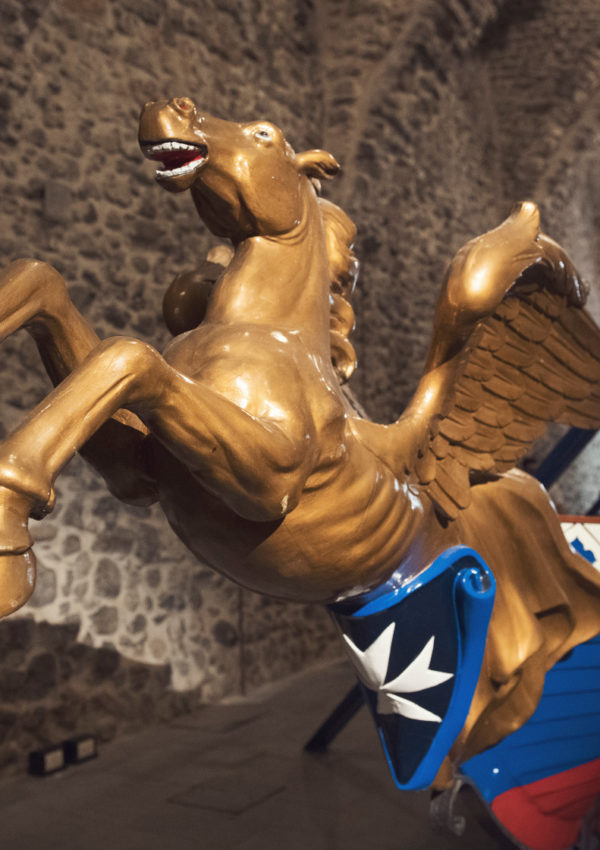


I love this post. Thank you for writing up the background to one of your Instagram pictures. I do love a bit of Italian medieval architecture… ☺️